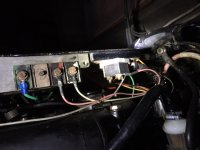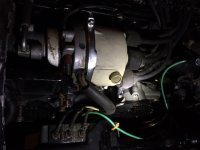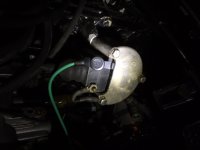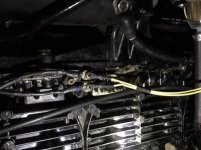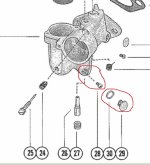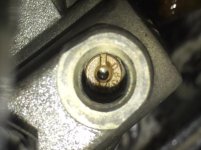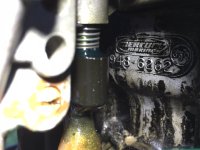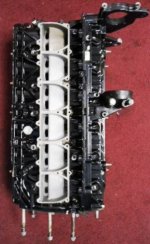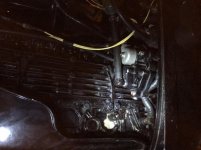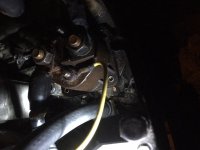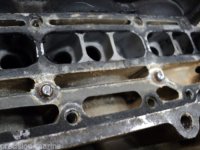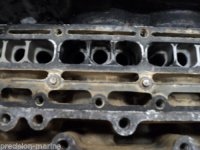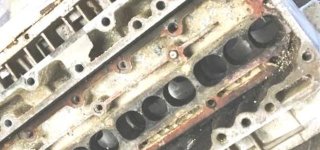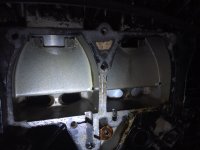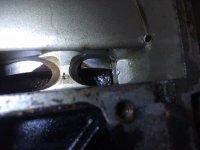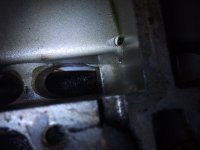OK, analyzing your serial # 4603143, I can only conclude that the mid-section came from a 1977 115hp.
The only other Inline Six (besides 115hp) produced in '78-'79 was a 140 and the serial #'s don't coincide.
Small possibility it came from a '76 150XS but very slim since those would have been a short shaft. Not sure if any of 'em came in a long shaft configuration as they were a high-performance version of the 1500.
There's only one way to know for sure, if you can't find any numbers on the block. Usually there would be some sort of serial # and stampings on the Stbd side of the block, near the intake port covers.
Here's what you need to do: take the most convenient carburetor for you to get at (either top or middle); you'll see a hex-shaped brass-colored plug at the very bottom front of the carb. This takes a 7/16" wrench/socket. Use a rag or container to catch any fuel coming out of the carb (be sure the fuel supply hose is disconnected from the motor), and remove the brass main jet plug.
Within you'll see a slotted brass main jet, it'll have a hole in the middle. On the face of the jet is a stamped number. If you can't see it 'cause of residual fuel, blow a bit of air or carb cleaner in there until the jet is clearly visible. With a strong light (LED will do the trick), note the number on the main jet.
If it's a 90hp, it should have a .070 main jet. A 115 should have a .072 jet.
This is not absolutely conclusive, because the motor may have been messed with. Very possible it's a mix-match of 90hp and 115hp parts.
Since we have a pretty good idea it could be a "Frankenmerc", you're probably gonna have to do the on-water diagnosing since jetting and other carb problems like this won't show up at an idle in a bucket.
But if you spray fuel/oil mix in a carb when the engine is bogging, and it picks up, it's a sure sign you either have a fuel delivery problem with the carb, or it's been messed-with (i.e., wrong jets, etc).
Here's the good news, the distributor-fired Merc Inline Six is like the Small Block Chevy of outboards!
Most of the external parts are interchangeable, and the biggest differences lie within, in the way the blocks are ported and the piston configuration. Amazingly, the same basic block had a hp range of 90 to 155hp. And the racing version of the Inline Six produced well in excess of 200hp!!
So, for the most part you could flip a coin and look up parts for a '77 115 or a '79 90, they're gonna be really close.
115:
http://www.marineengine.com/parts/mercury-outboard-parts/1150/3525441-thru-4855152-usa
90:
http://www.marineengine.com/parts/mercury-outboard-parts/900-90/4845301-thru-5299505-usa
The nice thing about this site is, besides the diagrams, they have actual pictures for most parts. So if you eyeball a particular part you're looking for, and it's physically identical to the part on your engine, it's more-than-likely to fit. Note the ignition components on all of these 99-c.i. distributor-fired blocks are completely interchangeable.
Note the attached diagram, #28 is the main jet, #29 is the brass main jet plug, #30 is a little red or brown gas
